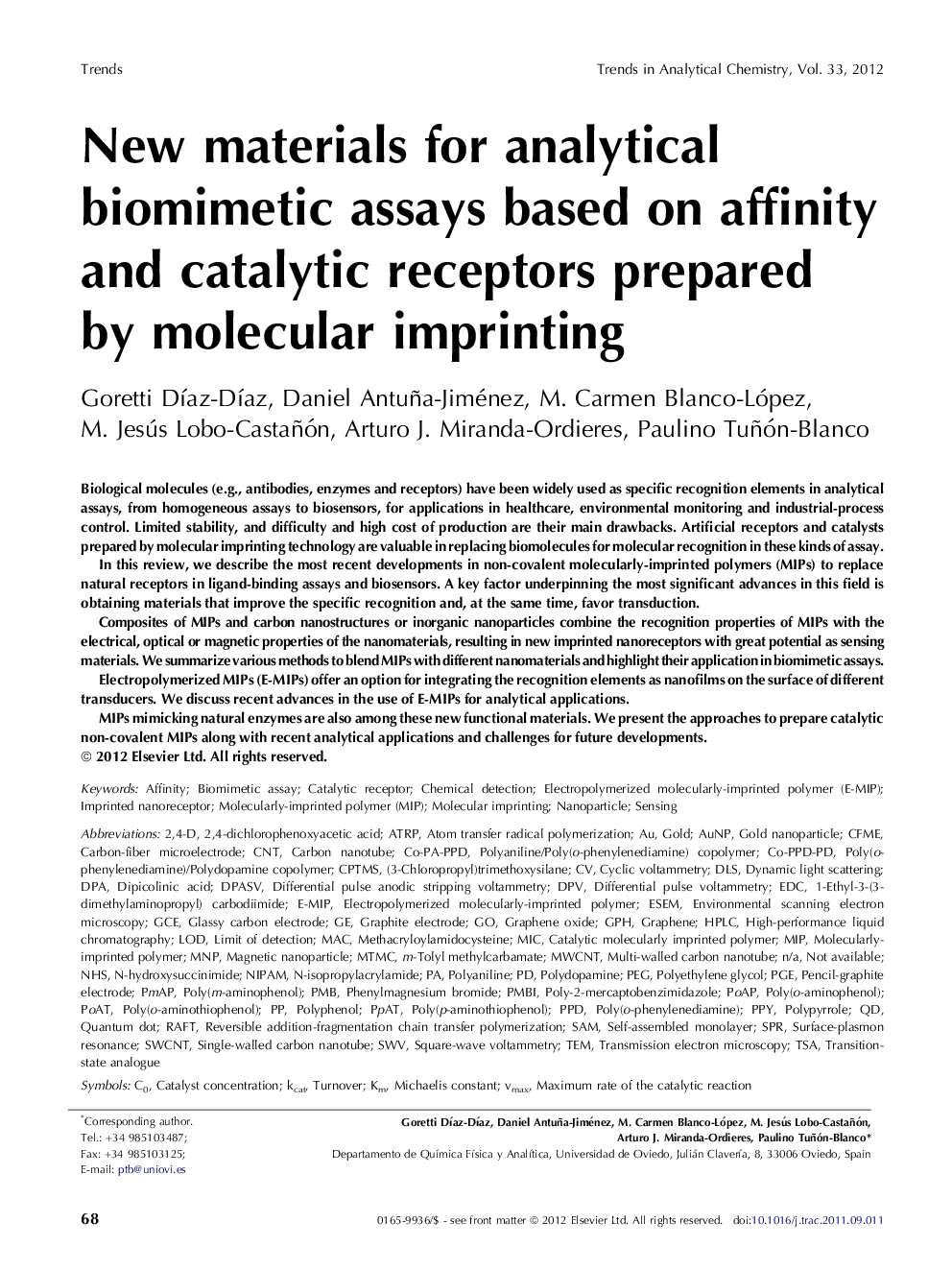| Article ID | Journal | Published Year | Pages | File Type |
|---|---|---|---|---|
| 1248144 | TrAC Trends in Analytical Chemistry | 2012 | 13 Pages |
Biological molecules (e.g., antibodies, enzymes and receptors) have been widely used as specific recognition elements in analytical assays, from homogeneous assays to biosensors, for applications in healthcare, environmental monitoring and industrial-process control. Limited stability, and difficulty and high cost of production are their main drawbacks. Artificial receptors and catalysts prepared by molecular imprinting technology are valuable in replacing biomolecules for molecular recognition in these kinds of assay.In this review, we describe the most recent developments in non-covalent molecularly-imprinted polymers (MIPs) to replace natural receptors in ligand-binding assays and biosensors. A key factor underpinning the most significant advances in this field is obtaining materials that improve the specific recognition and, at the same time, favor transduction.Composites of MIPs and carbon nanostructures or inorganic nanoparticles combine the recognition properties of MIPs with the electrical, optical or magnetic properties of the nanomaterials, resulting in new imprinted nanoreceptors with great potential as sensing materials. We summarize various methods to blend MIPs with different nanomaterials and highlight their application in biomimetic assays.Electropolymerized MIPs (E-MIPs) offer an option for integrating the recognition elements as nanofilms on the surface of different transducers. We discuss recent advances in the use of E-MIPs for analytical applications.MIPs mimicking natural enzymes are also among these new functional materials. We present the approaches to prepare catalytic non-covalent MIPs along with recent analytical applications and challenges for future developments.
► Progress in molecularly-imprinted polymers (MIPs) for replacing natural receptors. ► Nanosensors based on MIPs and inorganic nanoparticles or carbon nanostructures. ► Great potential of electropolymerized MIPs as artificial receptors in sensors. ► Catalytic MIPs mimicking natural enzymes in analytical assays.
